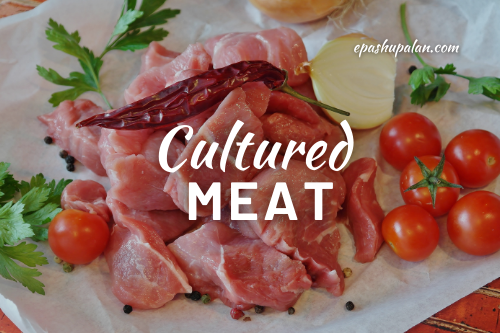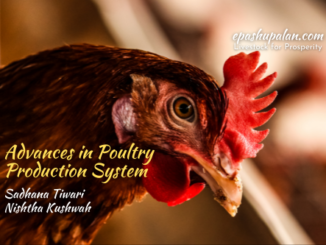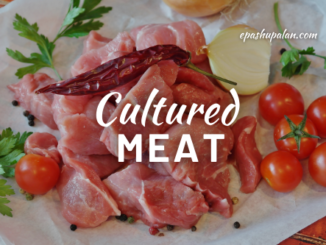The demand for meat has been anticipated to increase two times throughout the next several decades (FAO, 2006). This wide gap between the demand and supply prompts a need for an alternative which not only justifies the demand but also ventures decreased carbon output leading to global warming. In this regard, the researchers have focused their vision on development of artificial or lab grown meat. Cultured meat also known as lab grown or artificial or cultured meat has gained the attention of the population worldwide especially those who rely on non-animal sources to meet their protein demands. Cultured meat offers an advantage of producing meat from animal cells but without harming or killing the animals. In addition to the concerns over animal welfare, this meat also offers a choice of customization of meat where, it could be produced as per the requirement say, improved saturated fat levels, vitamin supplementation etc. It could also lead to significant decrease in food (meat) borne illnesses since the animal cells are harvested aseptically and grown in contamination free media.

Science behind cultured meat
Cellular agriculture
It is a multi-disciplinary branch of science that encompasses biotechnology, medicine and farming and aims at producing animal products without slaughtering or inhumanely exploiting animals. It devises naïve innovative techniques viz., culturing cells harvested from live animals and growing them in a cell culture media inside a bioreactor or fermenter.
Essential requirements for producing cultured meat
The cell culture technique needs an aseptic and sterile working space perfectly fitted with High Efficiency Particulate Air Filter (HEPA), incubators, sterile culture media, microscope and cryopreservation. Like other cell culture requirements, cultured meat also requires the same ingredients however in addition it also requires a large bioreactor or fermenter to produce cells in huge numbers. The culture media provides all the necessary nutrients required for cell growth and achieving confluency in cells for example amino acids, fatty acids, sugars, ions, inorganic salts, cofactors, vitamins and optimum pH. However, unlike fetal bovine serum used in regular cell culture, cultured meat requires an alternative source of serum growth factors.
Steps of cultured meat production
An ideal criteria for producing cultured meat includes sufficient prolificacy, extended life of cells and ability to adhere and grow independently on any surface and form a tissue. The embryonic stem cells, myoblasts or adult stem cells possess the following attributes and therefore can be used to produce cultured meat. Stem cells multiply at a higher rate when compared to other cell types but it becomes quiet challenging to prompt them to grow in a particular fashion. The cells like myoblasts are ideal to grow into a muscle tissue as they have already differentiated to an extent and also possess the ability to divide. The fetal bovine serum (FBS) provides the growing cells with nutrients and stimulating growth factors. The preservatives are added to prevent any microbial growth. Once the growth starts, the cell density paces up and generally within two months of ongoing production it is sufficient to produce fifty thousand tons of meat from only ten pork muscle cells. However, for the efficient circulation of nutrients and oxygen into the cells, an artificial circulatory system is required.
Dispute over nomenclature
There is still a conflict if this meat should be termed as cultured meat, since the name suggests the meat is being grown on petri-dishes and in lab, however, only the initial phase of cell culture is practiced inside lab, with the bulk production happening in the bioreactors or fermenters. In addition to this, the term lab grown meat sparks controversy since the commercial production would not employ labs to produce such meat.
With all the disputes over the nomenclature of such meat, “clean meat’’ is the most accurate term that is indisputable since the meat is raised without slaughtering the animals and harming the environment. Moreover, it also adds to prevention from meat borne illnesses and problems associated with drug residues in meat.
Process of cultured meat production
The entire process of cultured meat production involves the use of four main key elements, namely: cell lines, culture media, scaffolds and bioreactors. Talking about the cell lines, stem cells are the preferred choice for cultured meat production, with ability of self-renewal, high multiplicity and ability to differentiate into any type of specialized tissue. However, due to ethical reasons adult stem cells are used over embryonic cells in production of cultured meat. Researchers have also concluded that myosatellite cells are the most suitable cell types for culturing meat either alone or when used in conjunction with fat cells.
Advantages
- Customized meat- The cultured meat on comparison with the conventional meat offers an advantage of being engineered to be healthier and more nutritive by either adjusting the composition of the culture medium, fat content and c fatty acid composition. There is also an added advantage to adjust the ratio of saturated to unsaturated fatty acids, where harmful fats can be substituted with good one, thus offering a health benefit to heart patients.
- Animal ethics and welfare- animals are needed only in the first stage of extracting a tissue sample by biopsy therefore, it limits any harm to animals. The idea that a single farm is sufficient to produce world’s meat supply is sufficient to illustrate the reduced need of animals for producing such meat and taking in consideration welfare of animals (Bhat and Bhat 2011a, b).
- Reduction in meat borne diseases: Since the cells are harvested and maintained in aseptic environment, the cultured meat prevents any risk of meat borne illnesses. In addition, the risk of drug residues, hormones, contaminants in meat is substantially reduced.
- Hastened production: The bioreactors serve the purpose of producing million tons of meat in a span of few weeks (chickens) to years (pigs, cows). Also, the amount of time and labor engaged in producing per kg meat is relatively lower.
- Reduction in ecological footprint: The cultured meat production is relatively efficient than conventional meat production, where 75-95% of the feed given to the animal in conventional system is lost in metabolism, stress, diseases, reproduction. The reports estimate that cultured meat requires 7-45% less energy compared to conventional meat. The greenhouse gas emissions is 78-96% lower with relatively lower water use (82-96%) and 99% lower land use (Tuomisto and de Mattos 2011)
Conclusion
To cater the protein requirements of approx. 10billion people by year 2050 whilst keeping the production sustainable, nutritious and healthy is a tough job, but cultured meat can be the real future game changer with the wide array of benefits that it offers. This could prove to be a healthy and sustainable alternative for expanding health-conscious population. The collaboration and support from the multi-specialty fields will further widen the scope and mass production of this innovation.
References
- Goodwin, J.N. and Shoulders, C.W., 2013. The future of meat: A qualitative analysis of cultured meat media coverage. Meat Science, 95(3), pp.445-450.
- Bhat, Z.F., Kumar, S. and Fayaz, H., 2015. In vitro meat production: Challenges and benefits over conventional meat production. Journal of Integrative Agriculture, 14(2), pp.241-248.
- Hopkins, P.D. and Dacey, A., 2008. Vegetarian meat: Could technology save animals and satisfy meat eaters?. Journal of Agricultural and Environmental Ethics, 21(6), pp.579-596.
- Bartholet, J., 2011. Inside the meat lab. Scientific American, 304(6), pp.64-69.
- Pluhar, E.B., 2010. Meat and morality: Alternatives to factory farming. Journal of agricultural and environmental ethics, 23(5), pp.455-468.
- Tuomisto, H.L. and Teixeira de Mattos, M.J., 2011. Environmental impacts of cultured meat production. Environmental science & technology, 45(14), pp.6117-6123.






Be the first to comment